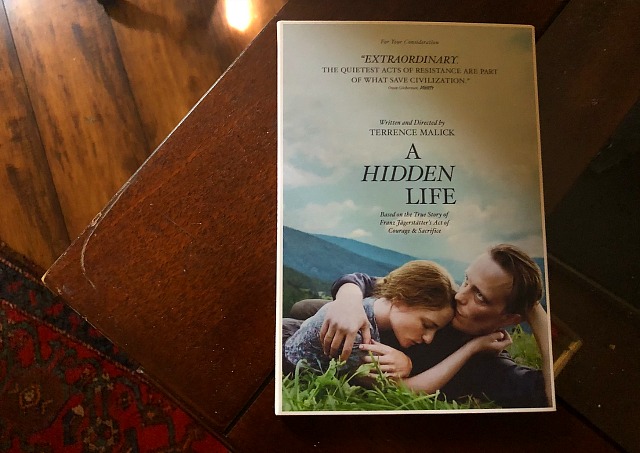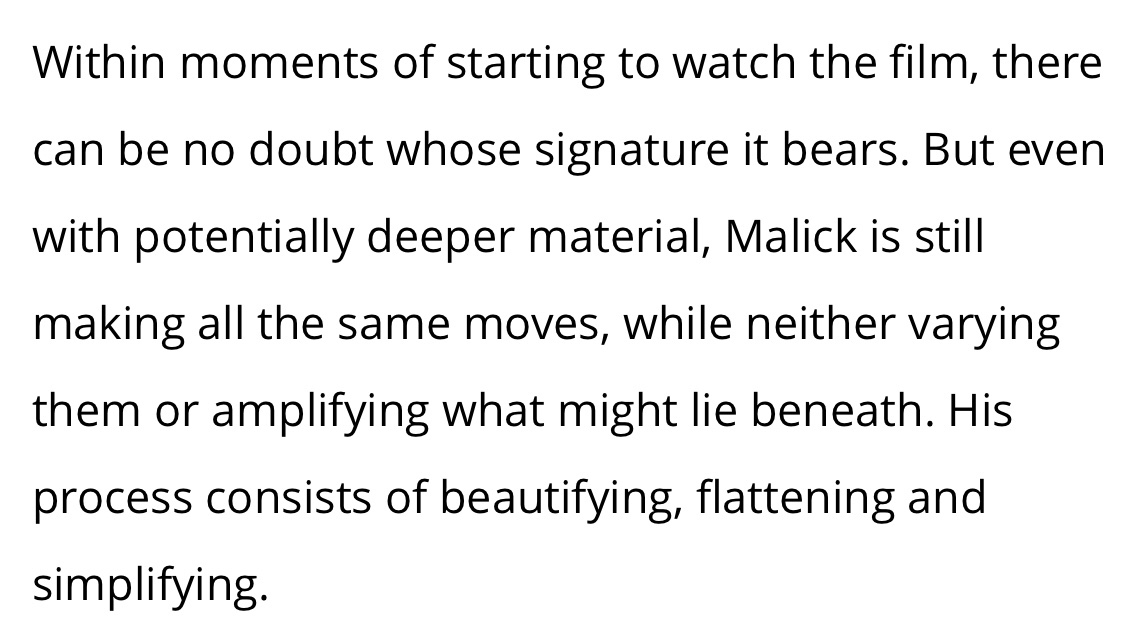From “Same Old Wackadoodle,” posted on 5.19.19: The idea was that Terrence Malick‘s A Hidden Life might represent a return to a kind of filmmaking that Malick hadn’t really embraced since Days of Heaven, which was shot 43 years ago and released in the fall of ’78.
Because over the last decade (and I wish this were not so) Malick has made and released four story-less, mapped-out but improvised dandelion-fuzz movies — The Tree of Life (’10), To The Wonder (’12), Knight of Cups (’15) and Song to Song (’17).
The fact that The Tree of Life was widely regarded as the first and best of Malick’s dandelion fuzzies (the principal traits being a meditative, interior-dreamscape current plus whispered narration, no “dialogue” to speak of and Emmanuel Lubezski cinematography that captures the wondrous natural beauty of God’s kingdom)…the fact that The Tree of Life was the finest of these doesn’t change what it basically is.

So does A Hidden Life represent a return to the old days? Does it deliver an actual story with, like, a beginning, middle and end? Does it offer a semblance of character construction and narrative tension with some kind of skillfully assembled climax, etc.?
No, it doesn’t. For Malick has gone back to the same old dandelion well with a generous lathering of Austrian countryside visuals plus some World War II period trimmings.
Malick’s script tells Jagerstatter’s story but obliquely, as you might expect. The big dramatic turns are “there”, sort of, but are dramatically muted or side-stepped for the most part. I hate to repeat myself but A Hidden Life generally embodies a meditative, interior-dreamscape approach plus whispered narration, some “dialogue” but most of it spoken softly or muttered plus a lot of non-verbal conveyances, and some truly wonderful eye-bath cinematography by Jörg Widmer that more than lives up to Lubezski standards.
The thing you get over and over from the film is how magnificent the locations look — mainly the small Italian mountain village of Sappada plus Brixen and South Tyrol, also in northern Italy.
Otherwise it’s basically a moody, meditative swoon flick about a highly moral, independent-minded Austrian who couldn’t find a way to fight for the German army in good conscience, and who stuck to his guns and paid the price for that.
Does the film suggest there are strong similarities between Nazi suspicion of Jews and other races and the racial hate that Donald Trump has been spewing since at least ’15? Yeah, it does, and that’s a good thing to chew on.
Can A Hidden Life be called a “good” film, as in professionally and passionately prepared with an adult-level story that pays off to some extent? Yeah, I suppose so. I’m certainly not calling it a bad or sloppy or indifferently made film, but it’s still the same old dandelion cereal that Malick has been serving since the dawn of the Obama administration.
The version I saw this morning allegedly ran 2 hours and 53 minutes. I didn’t time it myself, although I should have.
Consider this closing paragraph from Todd McCarthy‘s 5.19 Hollywood Reporter review:

And this description from The Guardian‘s Peter Bradshaw:
“The style that Malick has found for this subject is very much the same as ever: an overpowering sense of being ecstatically, epiphanically in the present moment, an ambient feeling of exaltation created by a montage of camera shots swooning, swooping and looming around the characters who appear often to be lost in thought, to an orchestral or organ accompaniment, and a murmured voiceover narration of the characters’ intimate but distinctly abstract feelings and memories.” In short, another one of Malick’s “signature symphonies.”









